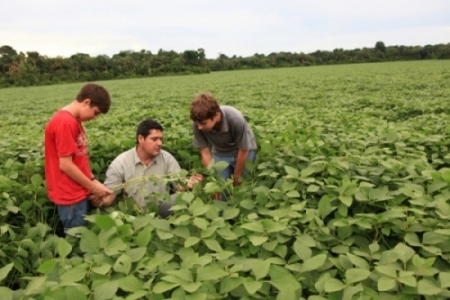Critical land use decisions are often made without understanding the full range of potential tradeoffs that different land use choices might yield among social, economic, and environmental values. This group modeled and field tested values for biodiversity, water quality- and quantity-related ecosystem services, carbon sequestration, and economic returns from grazing, crop and timber production, and other market oriented activities.
OUR APPROACH: The team evaluated case studies of land use tradeoffs, focusing on the interaction between forest code enforcement and soy production in the Brazilian Amazon and Cerrado regions. They also investigated the discord between sage grouse conservation and livestock grazing in sagebrush ecosystems of the Western United States.
Team Status:
Land Use Case Studies
The team identified 1) how forest code enforcement, extension of the soy moratorium, and spatial expansion would affect agricultural production, habitat loss, and forest protection, 2) how potential restrictions on grazing on public lands could indirectly affect habitat conversion on private lands via changes to ranching income, and 3) how habitat conservation would provide co-benefits from other species and ecosystems services within priority sage grouse conservation areas.
Incorporating Private Landowners into Large-Scale Conservation Planning
The team confirmed the importance of modeling private landowners’ economic decisions for informing conservation, land use planning, and federal policy. One of the most surprising findings was that unintended consequences are prevalent when this factor is ignored in large-scale conservation planning.


“When it comes to a choice between ranching, farming, or housing in the West, sustainable ranching is the most compatible with wildlife.”
-Claire Runge, Team Member